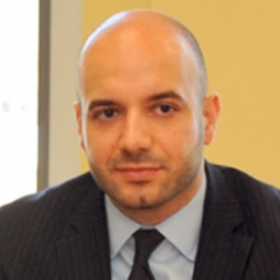
Verifying Nuclear Disarmament
Can the verification regime of the Comprehensive Nuclear-Test-Ban Treaty (CTBT) detect illicit nuclear testing with a high degree of confidence? This question was the topic of conversation on March 2, 2012, when the EastWest Institute, in partnership with London-based VERTIC, hosted a seminar on the verification capabilities of the current Comprehensive Nuclear-Test-Ban Treaty.
Moderated by EWI’s Jacqueline Miller and Andreas Persbo, Executive Director of VERTIC, the seminar featured presentations by experts Jenifer Mackby and Edward Ifft on technical advancements that have direct bearing on the CTBT’s robust and multifaceted verification regime.
The CTBT was adopted by the United Nations General Assembly on September 10, 1996. The Treaty has yet to enter into force. 157 countries have ratified the treaty. Another 25 countries have signed but not yet ratified the treaty—including the United States. President Bill Clinton presented the treaty to the Senate for ratification in 1999—and the Senate handed Clinton a stinging defeat when the treaty only received 48 of the 67 votes needed.
Opponents of the treaty cited concerns over the effectiveness of the CTBT’s verification regime—and, they argue, those concerns remain valid today. Proponents of the treaty point to successful real-world tests of the verification regime with North Korea’s nuclear tests in 2006 and 2009, as well as the March 2011 tsunami in Japan, where data were provided to help the Japanese government issue early tsunami warnings. CTBT monitoring stations also tracked the release of noble gases and radioactive isotopes from the Fukushima nuclear plant. Proponents of CTBT ratification add that verification regime is ahead of schedule and functioning at a higher level than anticipated.
Jenifer Mackby, an Adjunct Fellow in the International Security Program at the Center for Strategic & International Studies, spoke first. Mackby has extensive experience in the area of nuclear disarmament and the CTBT in particular, having served as secretary of both the negotiations of the CTBT at the Conference on Disarmament in Geneva as well as the Verification Working Group of the Comprehensive Nuclear-Test-Ban Organization (CTBTO) Preparatory Commission in Vienna. Dr. Edward Ifft, who spoke after Mackby, is an Adjunct Professor in the Security Studies Program at Georgetown University’s Walsh School of Foreign Service. He has been involved in negotiating and implementing many of the key arms control agreements over the past 40 years, including both the first and second Strategic Arms Limitation Talks (SALT) and the first (Strategic Arms Reduction Treaty) START.
Mackby found the verification mechanisms of the treaty as more than adequate for detecting illicit nuclear tests, noting that “most experts agree the treaty will prevent countries from developing advanced nuclear weapons or improving existing ones, thus impeding a nuclear arms race, curbing nuclear proliferation, and strengthening the Non-Proliferation Treaty.” Mackby specifically discussed the three main components of the CTBT—the International Monitoring System, the International Data Center, and the On-Site Inspection System. She also singled out some key features in what she considers to be the most far reaching verification regime of any agreement to date. These features include its state-led implementation strategy, zero-yield test threshold ban, and its ability to detect both above- and below-surface detonations. In addition, Mackby noted that current verification capabilities are much greater than when the CTBT was originally signed in 1996, allowing for a much more flexible, nuanced, and focused method of data analysis—or what she termed “precision-detection techniques.”
Ifft discussed the On-Site Inspection System (OSI) under the CTBT and its capabilities and drawbacks. The OSI is a vital part of the verification regime; in some cases it may be the only way to verify an ambiguous event. The CTBT’s OSI is much more intrusive than any other regime, with inspection teams possessing a wide array of techniques at their disposal. Ifft noted that “when the treaty enters into force, OSI will be a powerful force to use for verification.” Despite these positive developments, Ifft cautioned that certain techniques can be used to try to evade detection, namely de-coupling explosions, hiding tests in chemical explosions, and extremely small yield explosions. Despite these potential pitfalls, Ifft maintained, would-be testers would not have a high-degree of certainty that they could avoid detection—something that could serve as a powerful deterrent.
Both Mackby and Ifft concluded that technical advances have strengthened the detection capabilities of the CTBT’s intrusive verification regime. Although it is not yet in force, the treaty has contributed to halting vertical nuclear proliferation and the CTBTO has successfully detected nuclear explosions and monitored the relatively low-level accidental release of radioactive material at Fukushima. But North Korea’s 2009 nuclear rest highlighted the problem for all states when the CTBT is not in force. Since radionuclides were not detected, an OSI could have provided better insight into the scope of the North Korean test.
Mackby added that a number of countries are looking to the United States to ratify the treaty before they do so—China most prominently. President Obama has insisted that that he intends to present the CTBT to the Senate once again for ratification—without specifying the timing. Given the fact that this is an election year and any such attempt would spark new partisan debates, it’s unlikely to be anytime soon.

